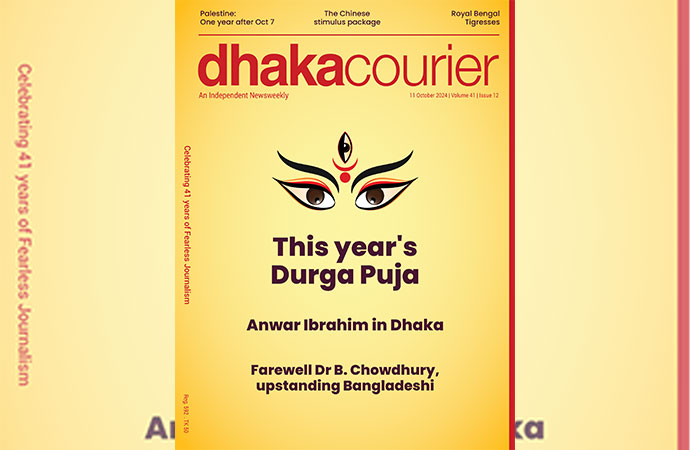Featured 1

"Do you see what I see?" It was the caption to a video that arrived in my inbox. Intrigued, I opened it to see it was a scene of pure monsoon bliss in Bangladesh, Dhaka to be specific. Obviously it was raining. Not in the company of a gusty nor'wester - more like those periods in between, when the wind dies down and the precipitation can take its time to come to ground. It provided the atmospherics to the verdant aesthetic of the leaves, shining from the shower, against a sky as grey as cement. Hardly anything seemed to be moving, with the occasional car that came along did i it snuck into a driveway, or double-parked for the view.
The languid beauty of the image captivated me. But I realised the teasing question that had led me to view the file in the first place remained unanswered: for all its striking beauty, there was nothing there that, at least to Bangladeshis, would have been unfamiliar or new. Indeed, it was the image of the monsoon that nestled in our hearts due to its familiarity. The riddle was misplaced or didn't exist - nothing to see here that we haven't already, countless times. I was going to tell my friend who sent it how misleading the caption was, when it caught my eye. Something was disturbing the stillness, or was it. It was a motion, right at the far end of the screen, that one could make out through the gaps in the trees that stood in the foreground. Rising low above a barrier to protect it, a uniform motion in which specks of magenta or red seemed to pass at short equal bursts beneath a streak of dark or bottle green - maybe a shade darker than our flag's, that became constant - before it was over, and everything returned to stillness once again.
As I realised what it was, I found myself barely able to contain my excitement - I dragged the video back to the part it appeared. And yes, there was no doubting it. Although it is there for just six seconds of the entire clip, that could only have been one of the trains for Dhaka's Metro Rail scheme, only just visible in the horizon, the top half (or less) bobbing above the boundary walls of the enclosed path on which the tracks had been laid, and becoming visible - if you're looking hard anyway, from the distance the camera was at. I dragged it back again, trying to listen for a sound. Holding the phone close to my ear, the faintest of rumbles coincides more or less with the six seconds, before fading. In fact, JICA prescribed the concrete boundary walls for the track - instead of glass - as one of the measures to cut down on noise. Other measures too would be employed, to make this mass transit system - with real and almost certain potential to ease the congestion that chokes our city on a daily basis- as noiseless as possible.
The video I just described, managed to capture a short stint of its first 'performance test' held earlier this week. Successfully, by all accounts. The MRT-6 line - from Uttara Phase-3 to Motijheel - is expected to start taking passengers at the end of 2022. More lines along different routes are expected to take shape in the years that follow. Provided all goes well from here on in.

























Leave a Comment
Recent Posts
No banks to be shut down: Fina ...
Some banks are recovering well, while others may continue to struggle, ...
27 envoys of European countrie ...
Diplomats representing 27 European countries, stationed in Dhaka and N ...
Unity to tackle climate change could be regional to ..
Mismanagement and overcrowding plague Dhaka Medical ..
Remarkable achievement for Bangladeshi artists at th ..
We need new economic framework that serves planet, p ..